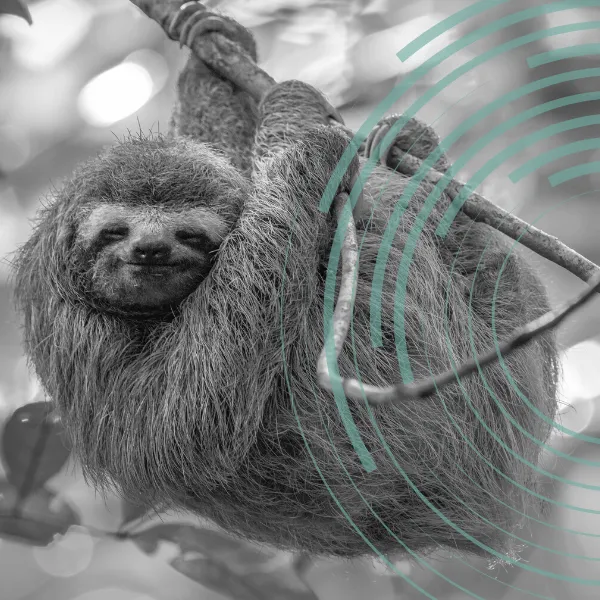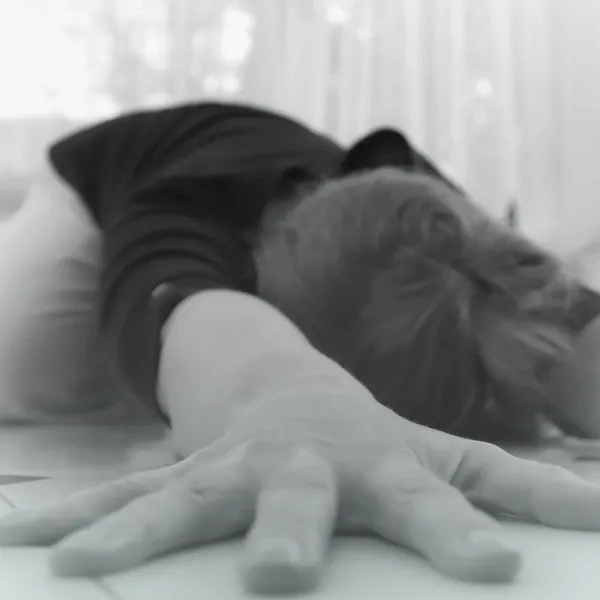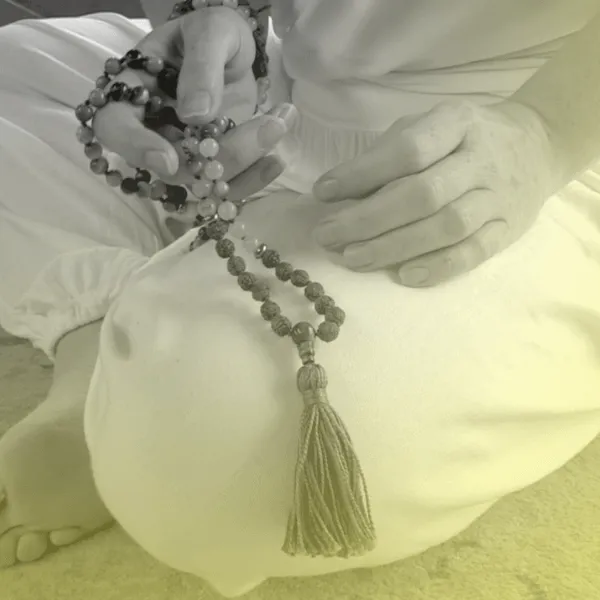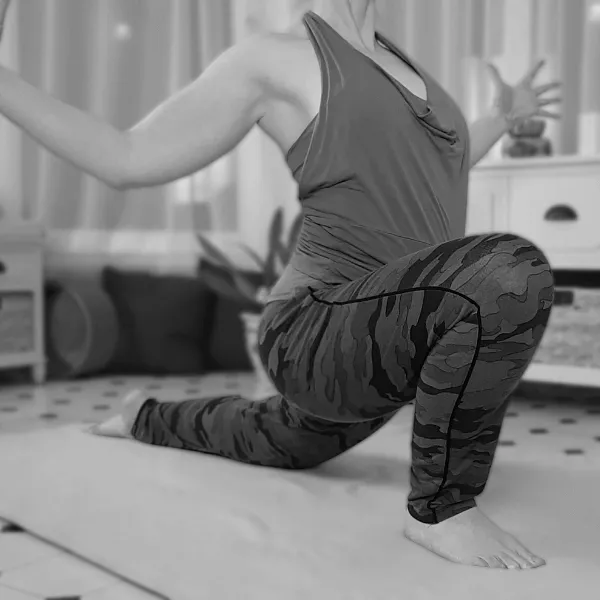How to Improve Your Meditation | Tips and Techniques
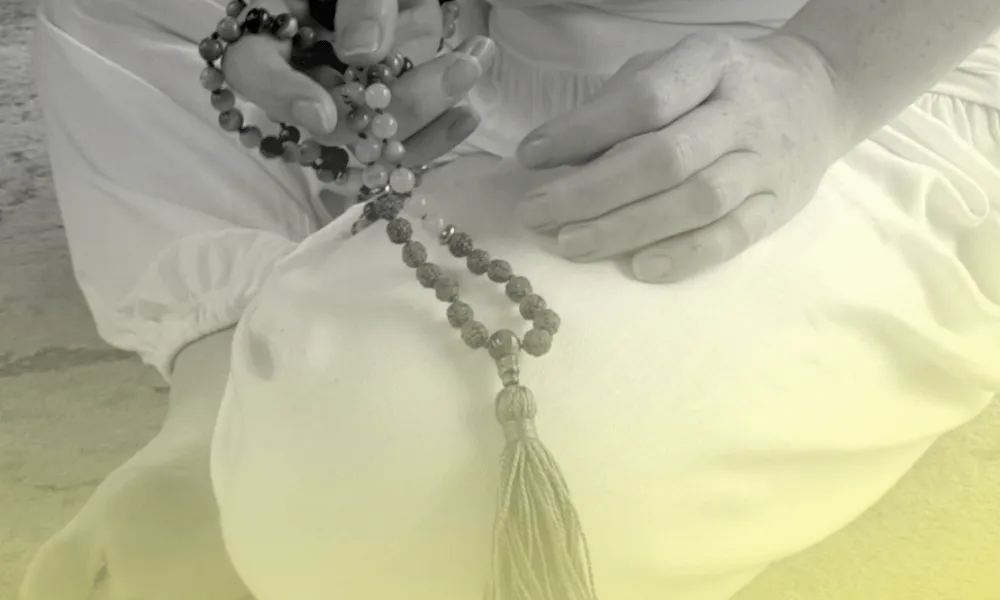
Meditation is a tough gig. When you take your first stumbling steps into the practice it can feel intimidating, overwhelming or just plain impossible. I felt every one of these emotions and more when I embarked on my own personal journey many years ago.
A lot of time has passed since I sat on that beach in Thailand, squirmy and uncomfortable; frustrated and about as far from ‘zen’ as I could possibly be.
I’ve learned a few things since then, that had I known them when I started out might have helped me find my way more easily – or perhaps I needed to struggle a little to grow into the person I am now.
I’ve put together 8 of my most powerful tips (and tricks) to help you meditate more effectively and enjoy it for the life changing practice it is. They’re practical actions that I use myself and can be easily applied in your daily life.
If you’re new to meditation I hope these suggestions will ease you into the practice and if you’re a seasoned meditator, it might help you approach your practice differently, with greater self-compassion.
Some days meditation feels effortless and other days it will challenge the hell out of you so save this article so you can come back to it for the days when you might feel stuck or sluggish or maybe in need of some inspiration or motivation. I got you my meditation friend.
What is meditation and how is it likely to benefit you?
Before we jump in, let’s look for a moment, at what meditation actually is (and what it’s very much not!)
Meditation is a way of training your brain. It’s the technique of observing your experience without judgement, focusing attention and being present with yourself.
There’s a common misconception around meditation and that’s the idea that when you ‘get it right’ your mind will be clear, emptied of all these tedious thoughts that churn relentlessly day after day.
Well nope, it doesn’t work like that.
You are not seeking to ‘empty’ your mind but to train it to narrow the focus. Thoughts will always rise and dissipate like waves on the shore. Your purpose is to allow them to flow, acknowledge that you’re having them and let them go, gently guiding your awareness back to the practice you’re doing.
Why meditate?
For a long time, I thought meditation was just some fluff that pseudo spiritual folks dabbled in. It was a waste of time with no real tangible effect. *Coughs loudly, at own ignorance!
Even when I started my meditation practice, I still harboured a belief that it wasn’t really that important or necessary. With that mindset it was easy to let frustration creep in when my mind would wander every 3 seconds. I’d give up, labelling myself as a failure and the practice as hokum, but something always drew back.
I tried a lot of different techniques, took some courses and even found myself in far flung places to try to truly understand what this confounding practice was all about.
A powerful realisation eventually came one day when I let my thoughts happen, without trying to be in control. I stopped looking for the ‘off switch’ and instead acknowledged each thought before guiding my mind back to the practice. No judgement, no drama; just kindness and repetition. It’s not sexy or particularly exciting when you put it like that, but it is POWERFUL!
I finally let go of the idea of the perfect meditation and it felt good with a capital G.
Benefits of mindfulness meditation
There have been numerous studies into the effects of meditation and mindfulness on your brain, your psychology and physiology. Below are a few of these:
- lowers stress and anxiety
- improves sleep
- fosters greater compassion
- raises emotional intelligence
- increases attention span
- reduces self-criticism
This article from Psychology Today is an excellent explanation of the science of why meditation is great for literally everything! It’s a bit technical but worth taking the time to plough through the big words!
Whatever form of meditation you choose whether it’s breath focused, movement based or a guided visualisation when you make time to slow down in your day you cultivate greater resilience, begin to value yourself more greatly and you get so much more done.
Read on to find out the 8 ways that will help you improve your meditation practice, today.
1 Get comfy without falling asleep
The traditional image of someone in meditation is seated on the floor, in lotus pose looking serene. If I sit cross legged on the floor for more than 20 minutes, my back aches and I usually lose feeling in one (or both) of my feet!
Sometimes I like to sit on the floor with cushions, other times I’m walking. I might be sitting at my desk so I’ll plant my feet on the floor and sit at the edge of my chair…the point is you need to get comfortable. Meditation is hard enough without fielding the 'ouchies' that come with trying to sit in a posture your body doesn’t love.
Whatever position you choose, make sure you have a long spine – imagine you are reaching the crown of your head up towards the sky. If you are sitting, raise your hips higher than your knees with some pillows or a yoga block. This helps to tilt your pelvis forward. Relax your shoulders, your neck and jaw and place your hands wherever they feel most comfortable.
The goal is to be comfortable without falling asleep (this is why laying down is not recommended) so take time to find the meditation posture that suits your body.
2 Warm up before you start
I’m talking yoga here, but any sort of stretching will do the job. There’s a centuries-old connection between stretching and meditation. Originally yoga stretches (or asana) were designed to provide the necessary physical and mental preparation for meditation. Sitting still for any length of time can get uncomfortable real fast and taking just a few minutes to warm up your muscles and lubricate your joints allows for greater comfort as you begin to explore the silence and stillness.
Movement is also a great way to create a better headspace for your practice. Mindful movement helps you find that space beyond your busy mind where you are calmer and more relaxed.
Synchronising breath and movement aligns your body and mind with the rhythm of your breath. You are already slowing down and starting to focus your mind. Perfect preparation for meditation.
3 Start so small you barely notice
I have a video that explains the concept of ‘bare minimum goal setting’ and it applies any time you’re trying to create a new habit in life. The theory behind this is to do whatever the bare minimum requirement is to implement a change; in this case it could be to sit quietly and observe your thoughts for one minute every day.
Watch ‘one minute can change your life’ on IGTV
Make it so easy for yourself that even on the days when you can’t be bothered, feel completely overwhelmed or find the call of Netflix too strong, you can still do your practice. Over time your one minute grows into 5 then 10 then the sky’s the limit.
This is especially important if like me you’re an overachiever. You’ll feel disheartened if you set yourself unachievable goals and you’ll come to resent the effort, so keep it small, keep it simple!
The journey rather than the destination is important so relax, you have all the time in the world.
4 Your mind will wander - FACT! (So, get over it)
I’ve mentioned already that meditation isn’t supposed to stop your mind wandering. It’s normal and healthy.
I know it’s easy to get frustrated at your lack of focus and concentration but that’s the journey. Accept your mind will wander. When you recognise it as normal and stop labelling the behaviour as good or bad you can step up and let it all happen.
Notice your mind wandering, then refocus on the meditation as best you can – remember, you’ll have varying degrees of success with this at different times.
When you notice your mind wandering, feel proud of yourself for becoming more aware. This proves you’re sticking with your meditation despite the challenges and the distractions.
5 Let thoughts come and go
Here’s a concept that can be tricky to master. Try not to become attached to a particular thought.
As your thoughts bubble up you might find yourself getting tangled up in them, analysing why this thought is there, what does it mean, how painful the memory is or stupid you feel for thinking/saying/doing that thing…
Your mind is going to sling all kinds of stuff at you, and these images, sounds, feeling might make no sense to you. Your conscious mind wants to assign meaning to everything; it’s how we maintain the perception of order. The paradox here is that the more you try not to focus on something the more you will focus on it.
Your meditation practice might feel confronting at times so it’s important you recognise that thoughts are just thoughts. They don’t need to be analysed, obsessed over or ruminated on.
As quickly as they appear they disappear and move on to the next thing.
Letting go doesn’t mean pushing away. Give yourself permission to fully experience your thoughts and the emotions that come with them – this can be scary and extremely uncomfortable. But like most big scary things, once faced they become less scary.
You’ll quickly realise that in allowing and embracing the maelstrom of your mind, it dissipates as quickly as it flares up.
6 Breath is an anchor
When you have a mind like an untrained puppy, it can be agonising to concentrate for more than a few seconds at a time. Thank goodness for breath.
Use your breath as an anchor point. Something to come back to when the puppy is running wild in your head. Acknowledge your mind has wandered, take a conscious breath, noticing how your body moves; the sensation of the air around your nostrils, how it feels as your chest expands. Breath out, letting go of all your judgement, disappointment, frustration (whatever story you’re telling yourself) then refocus on your practice.
7 Take a guide with you
Meditation doesn’t have to be just you and your thoughts, especially in the beginning. Try tapping into the infinite resources of YouTube or the many meditation apps available. Sometimes having a voice to focus on and guide you helps you to experience the benefits of meditation more easily. As you flex your mindful muscle, you’ll get more confident meditating on your own.
8 It’s not how you start, it’s how you finish
I was guilty for a long time of getting to the end of a meditation practice and spring boarding straight into ‘life’. My attitude was “thank god I’ve finished that, now let me go do something!”
There are so many things wrong with that sentence it could have an entire blog article of its own.
End your meditation, gently, slowly. Honour the time you’ve spent in the practice instead of plunging head long into ‘busy’. Process your experience, take time to write down some observations, thoughts or feelings. I often get some crazy good inspirations after I meditate but it takes a few minutes for the thoughts to come together.
Sit still, sip some water, do a few stretches. Listen to what your body and mind are asking for and do it…slowly.
Try this guided meditation to wind down after a busy day.

